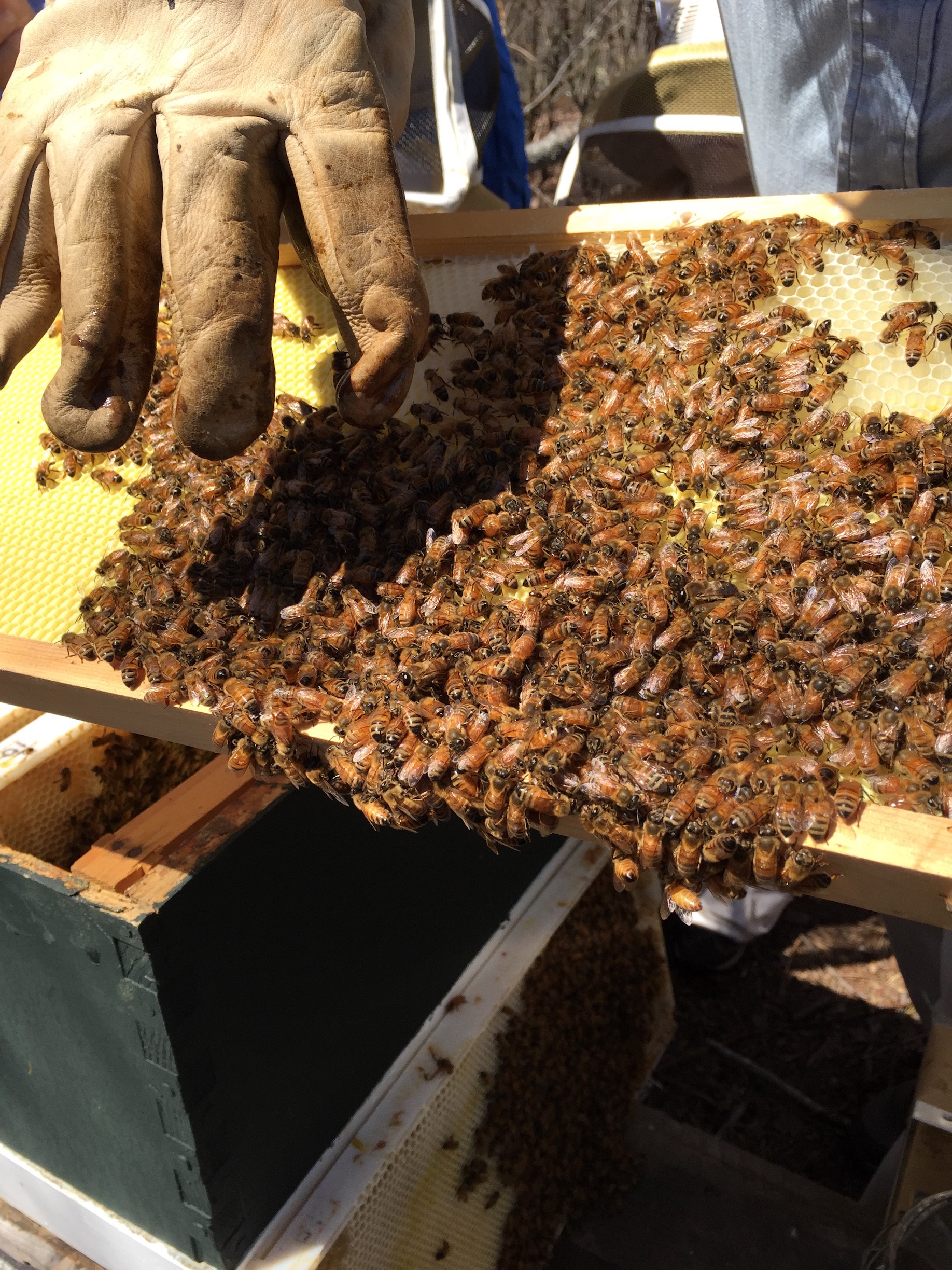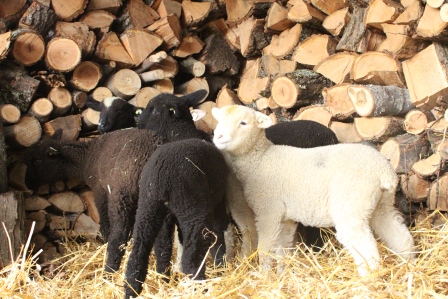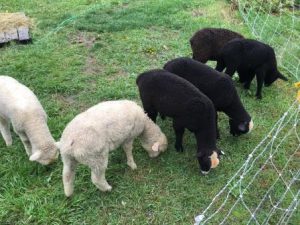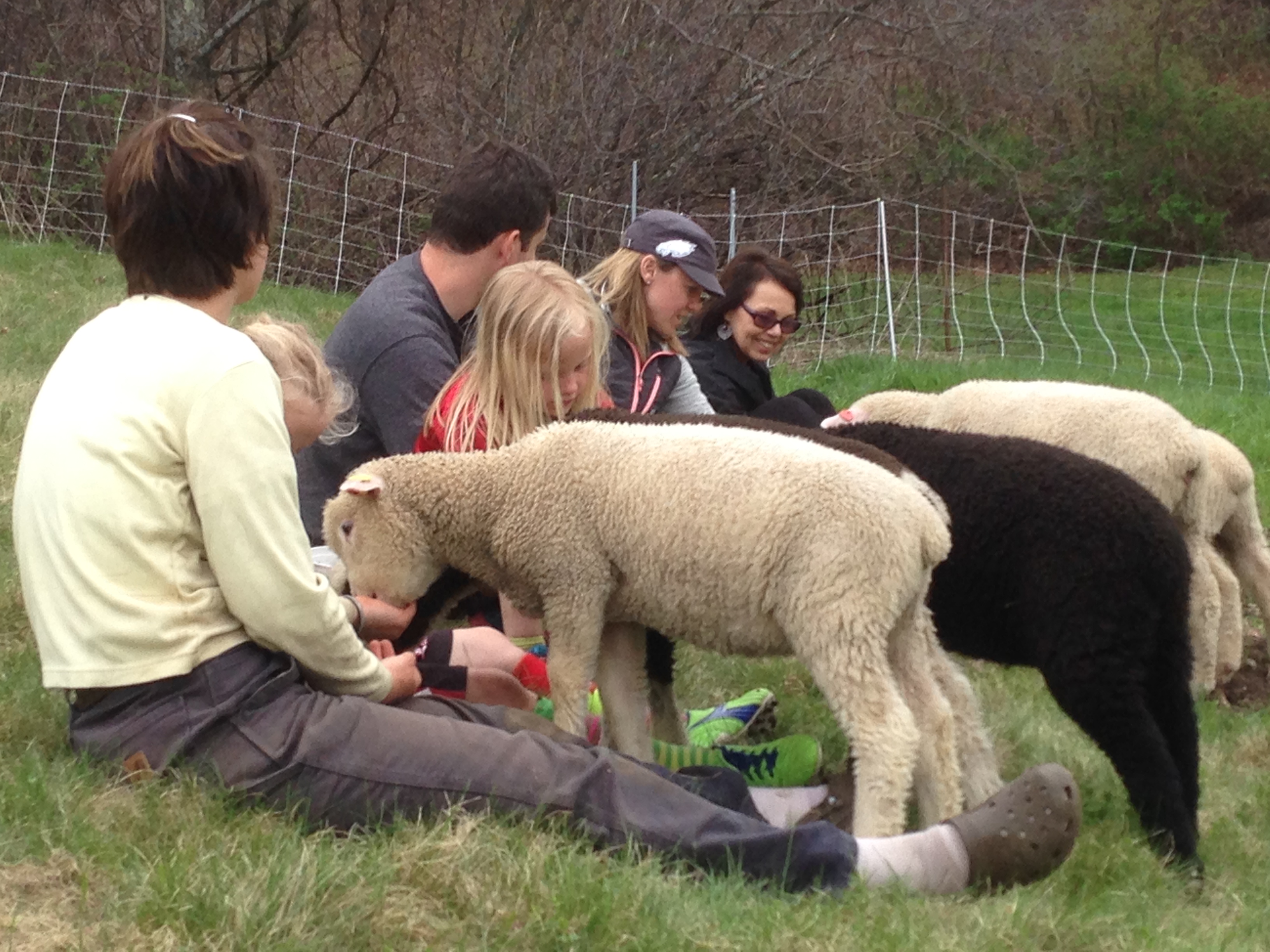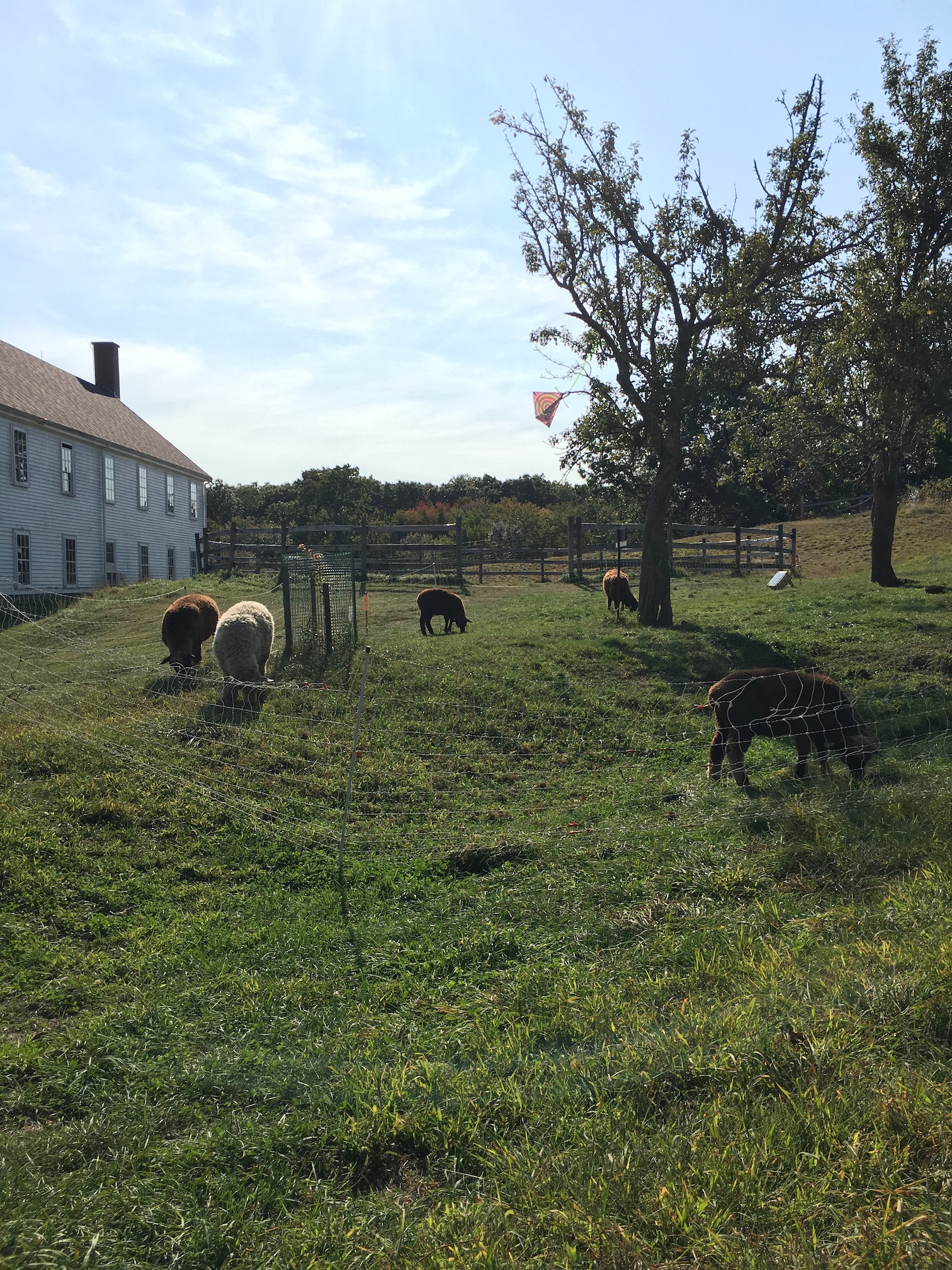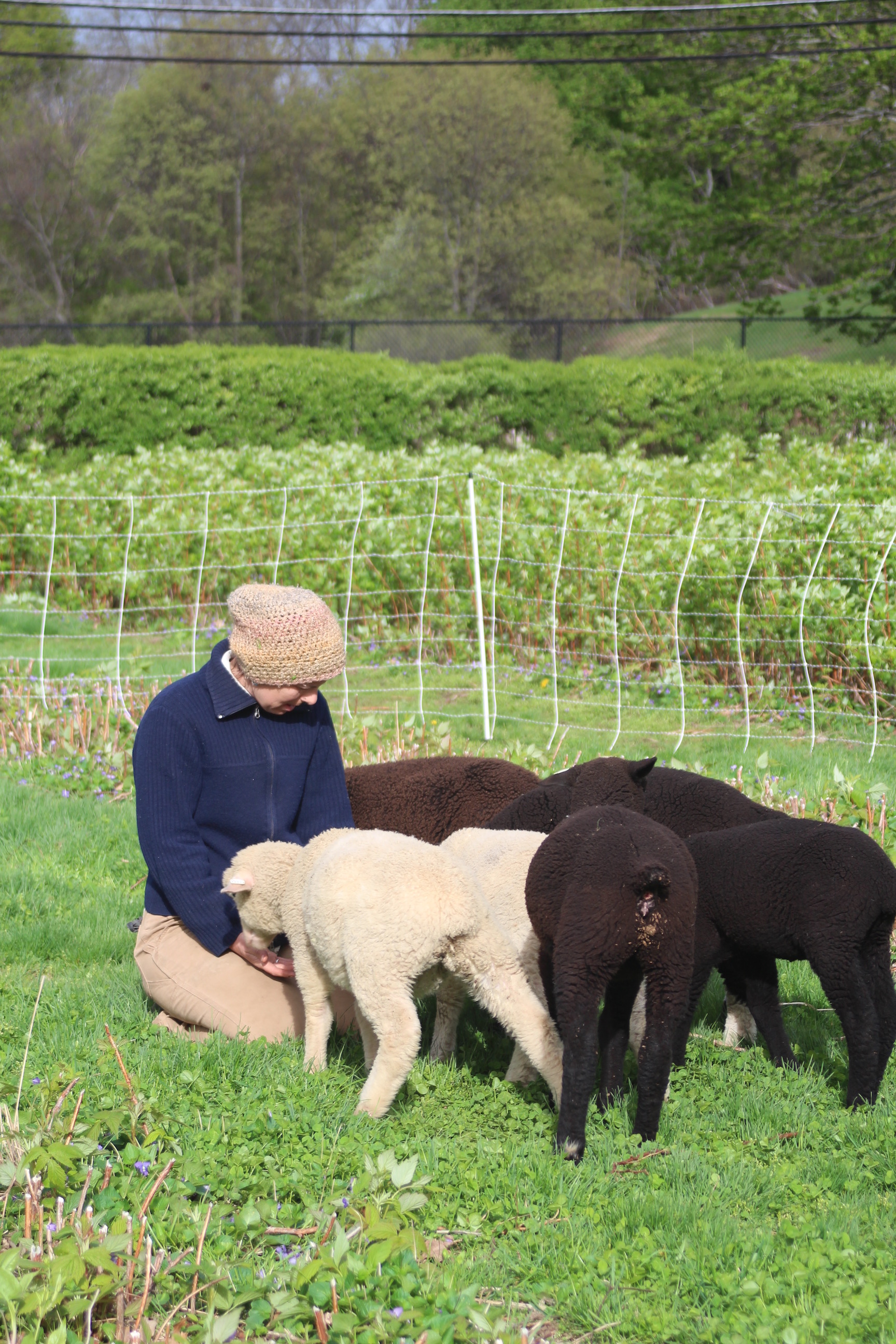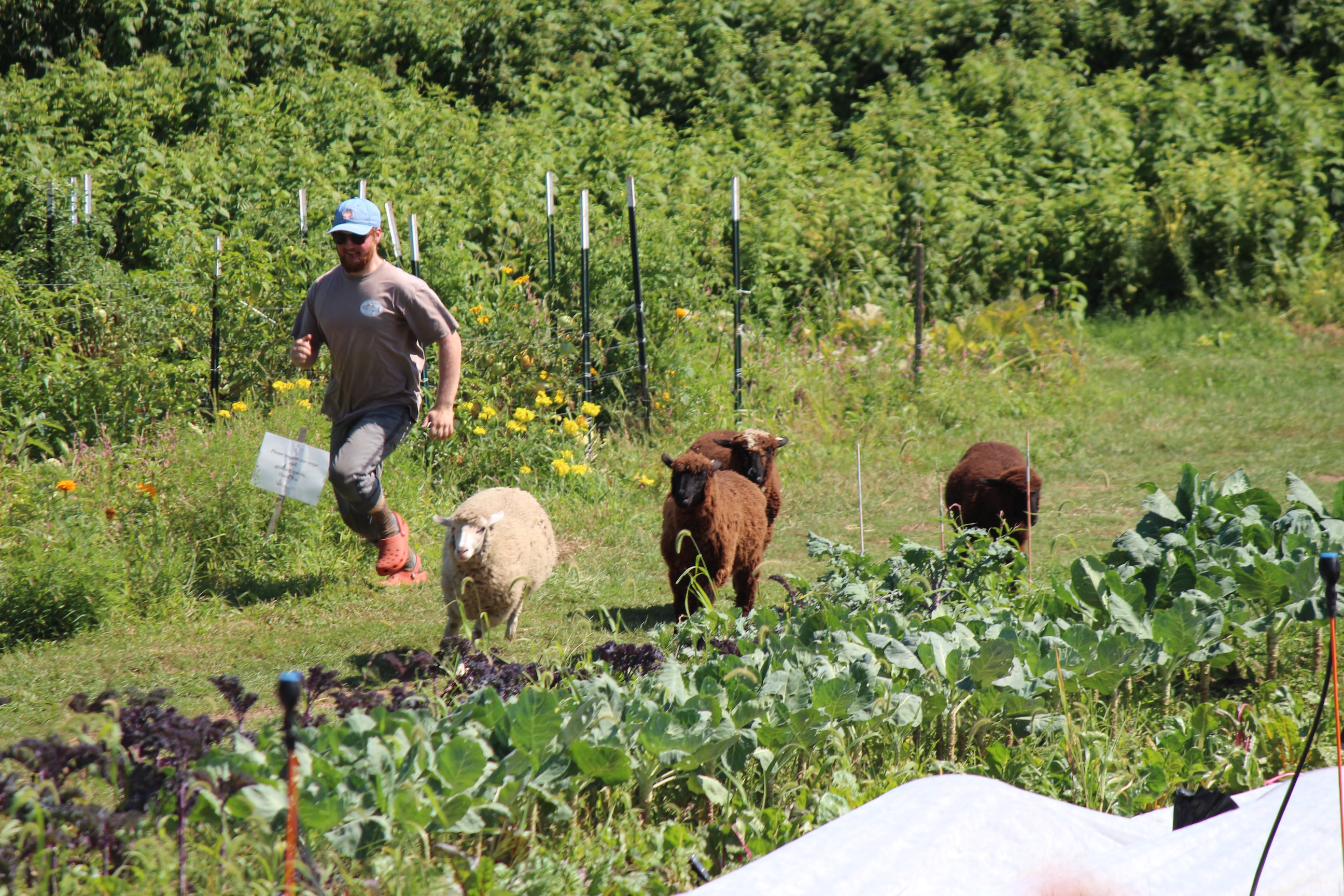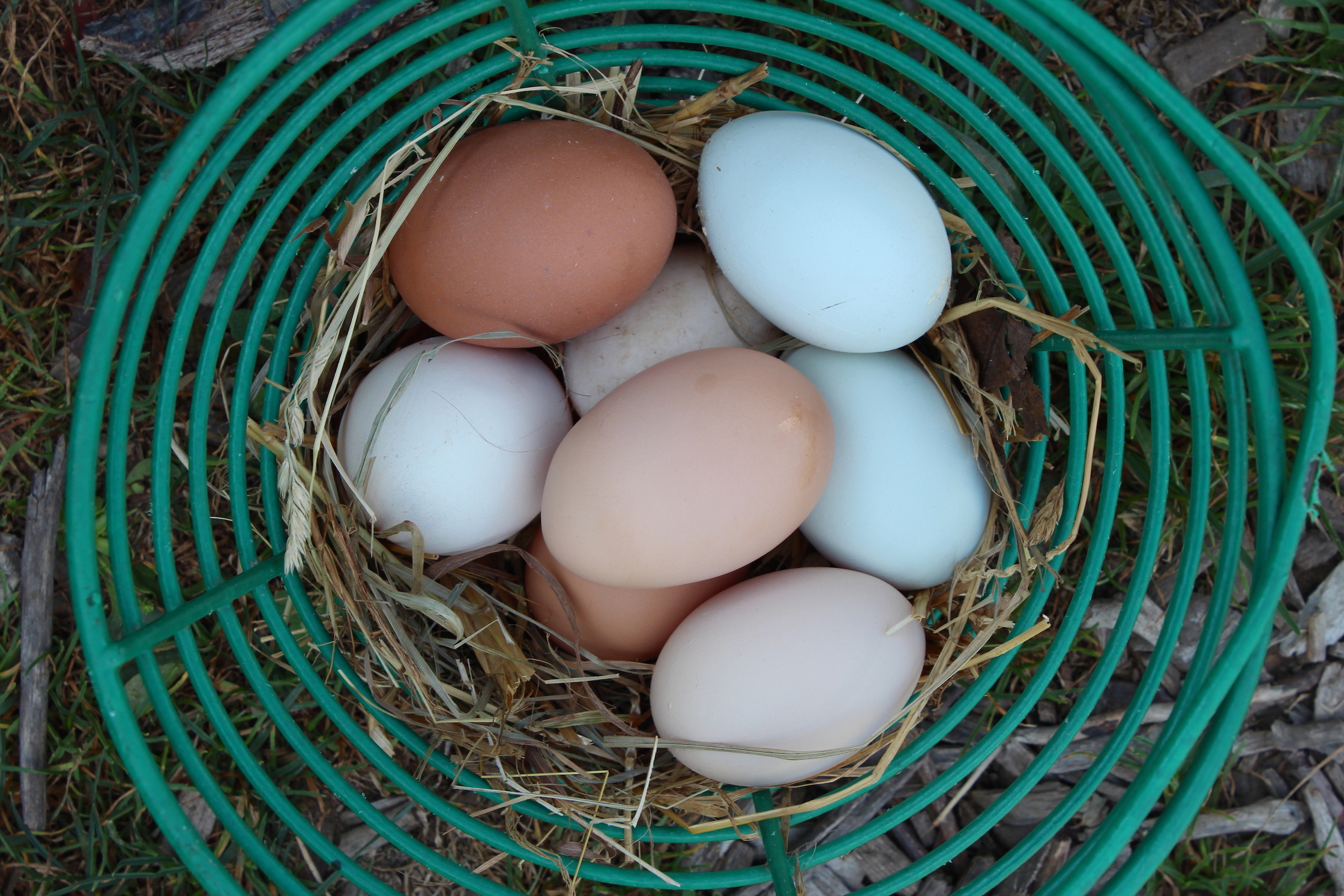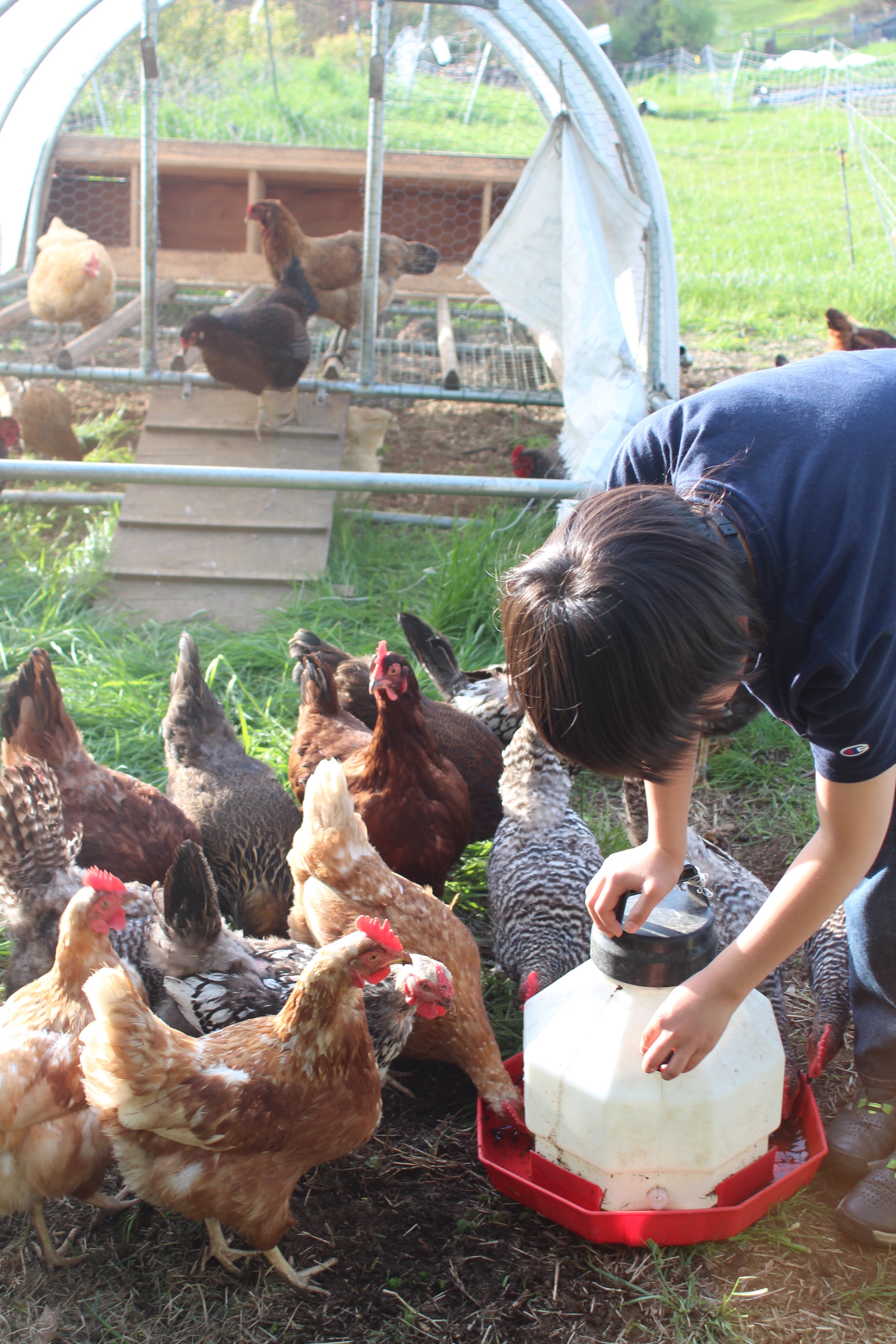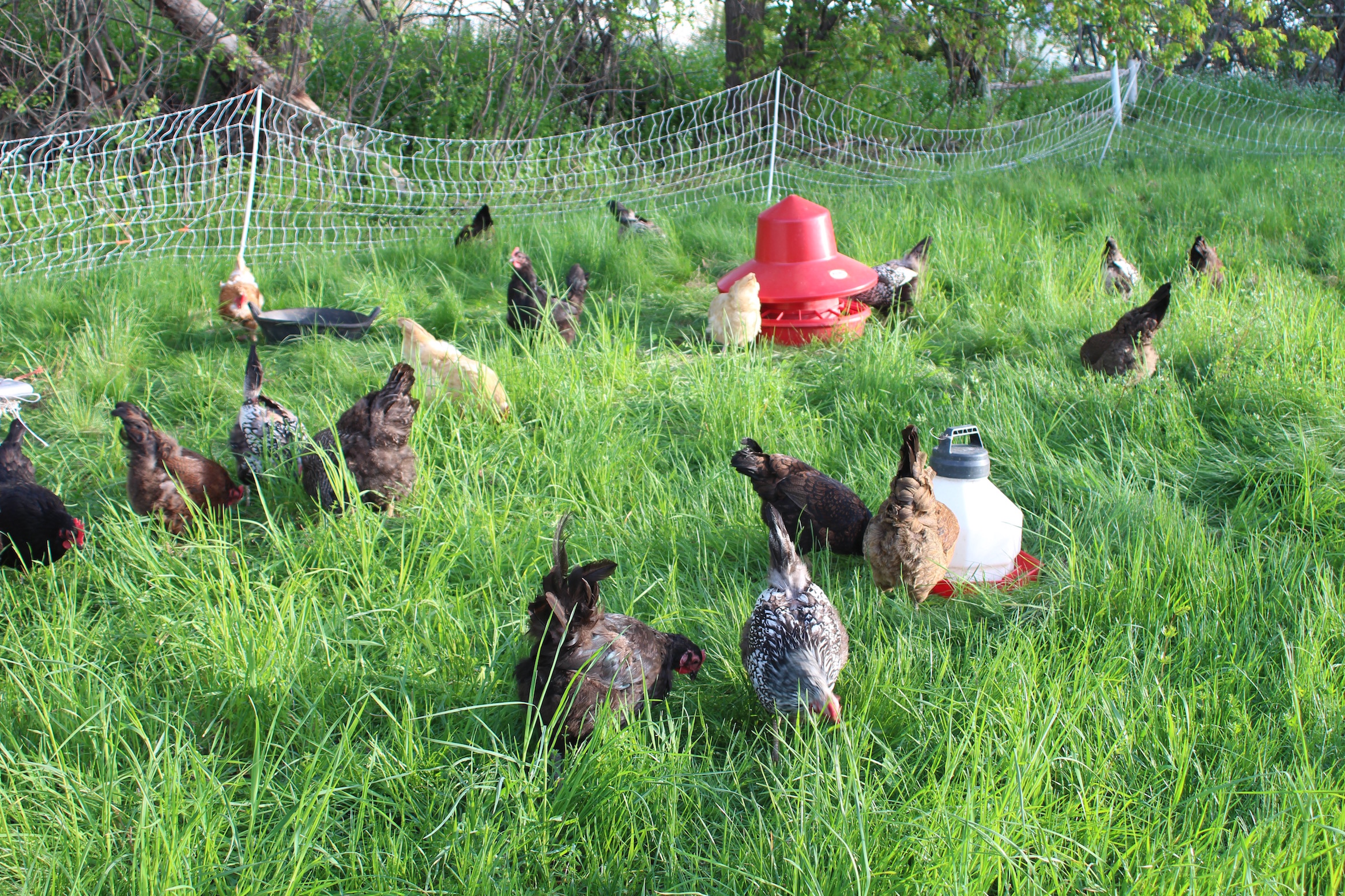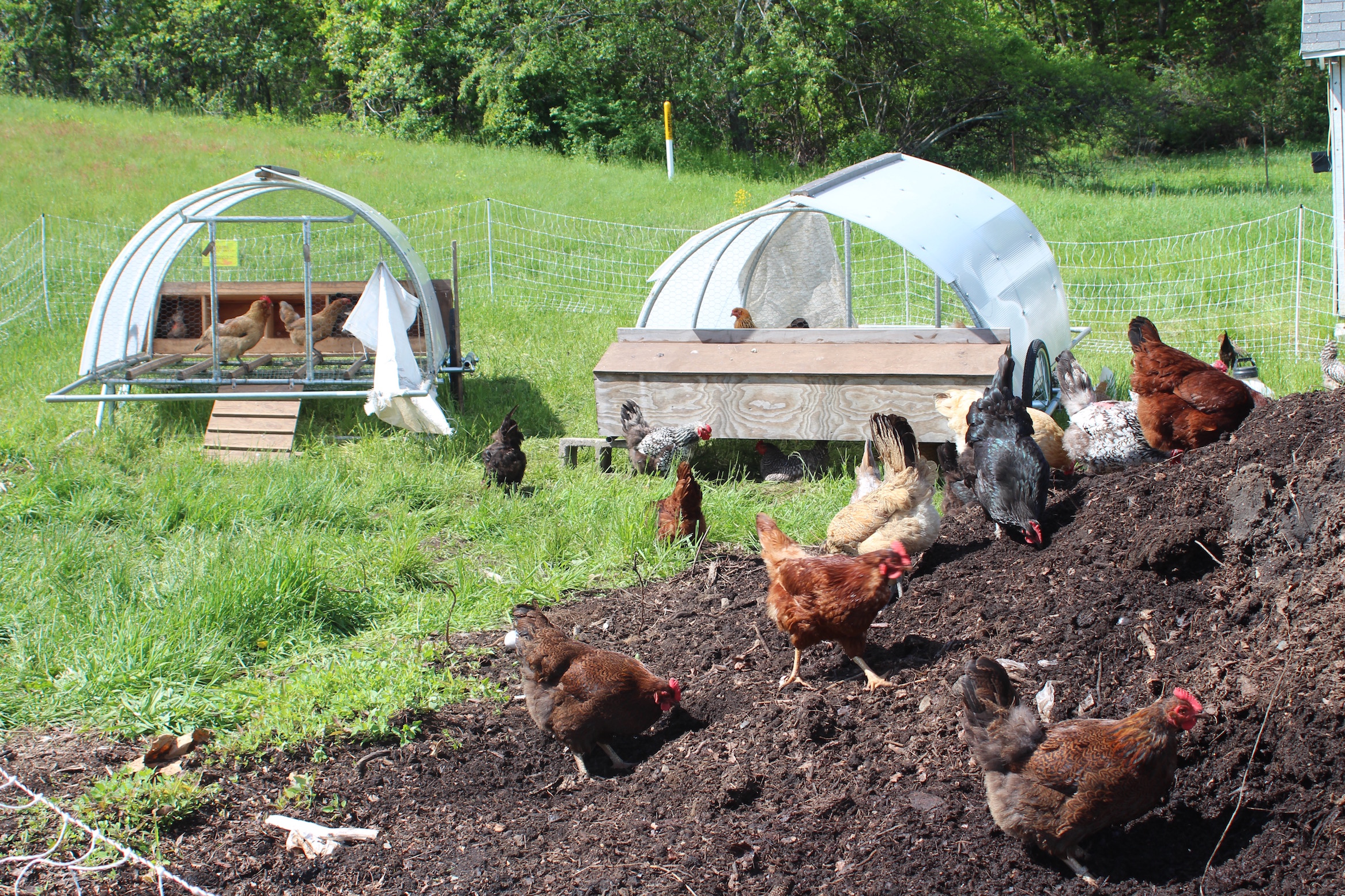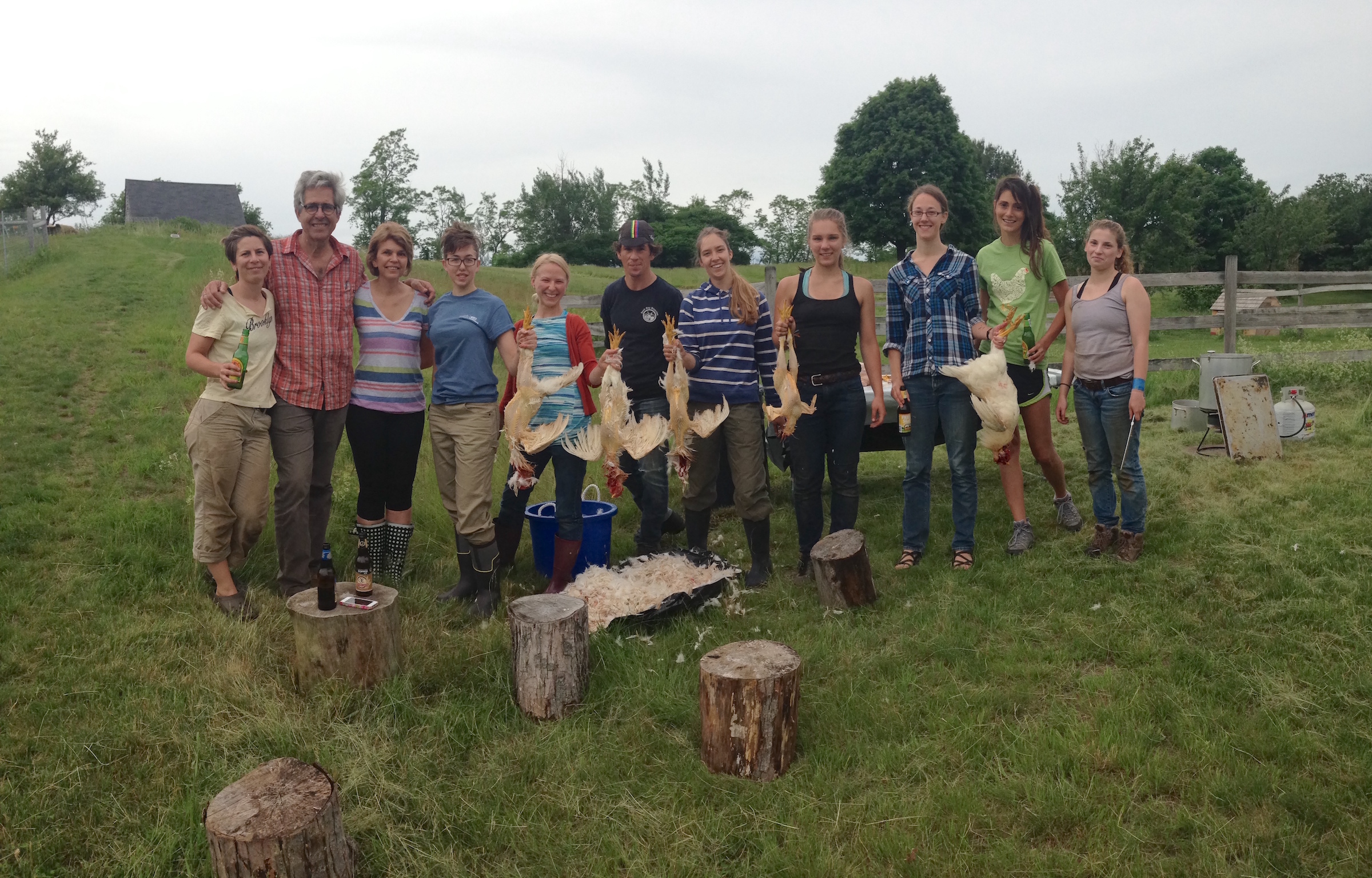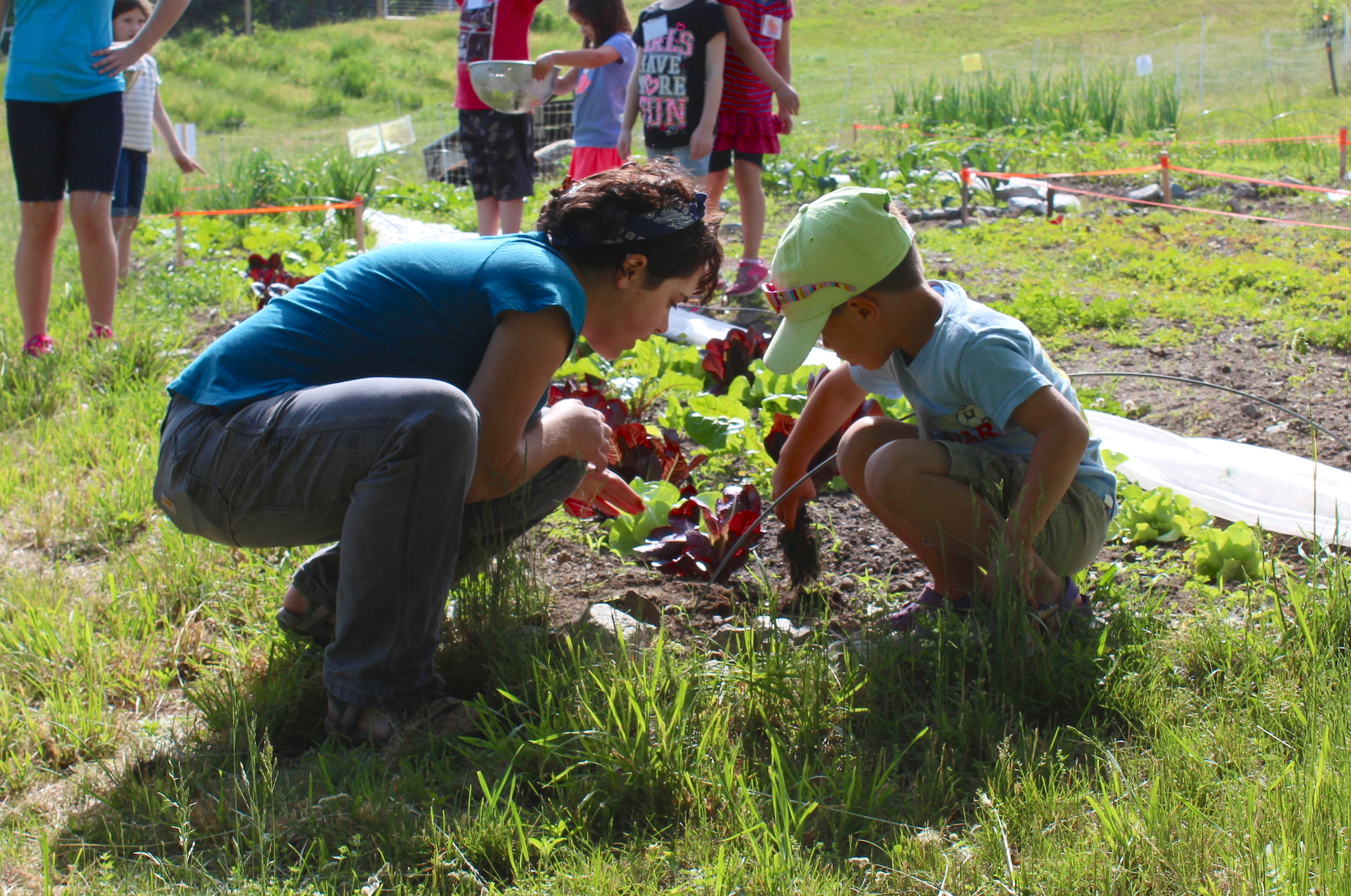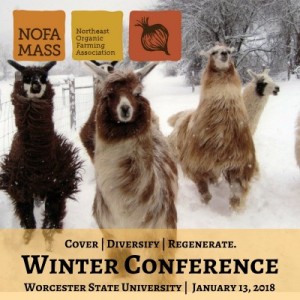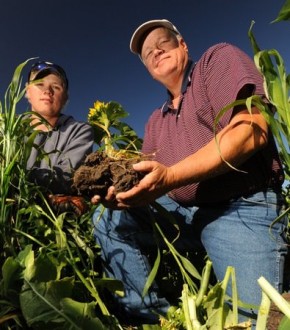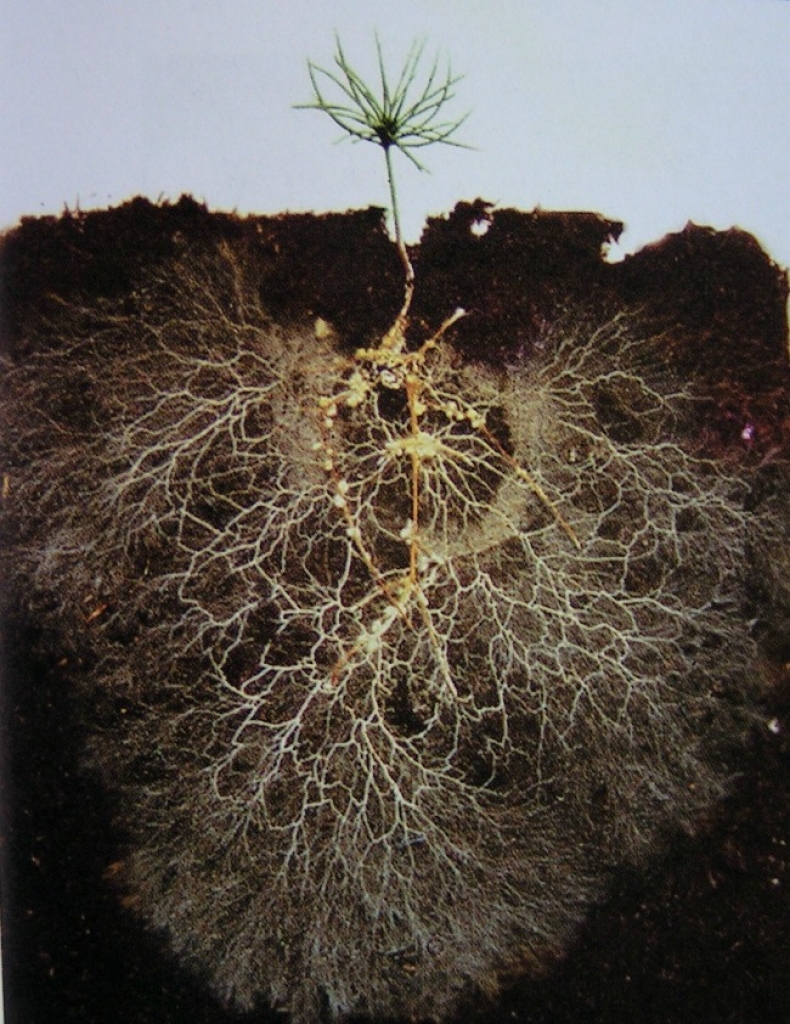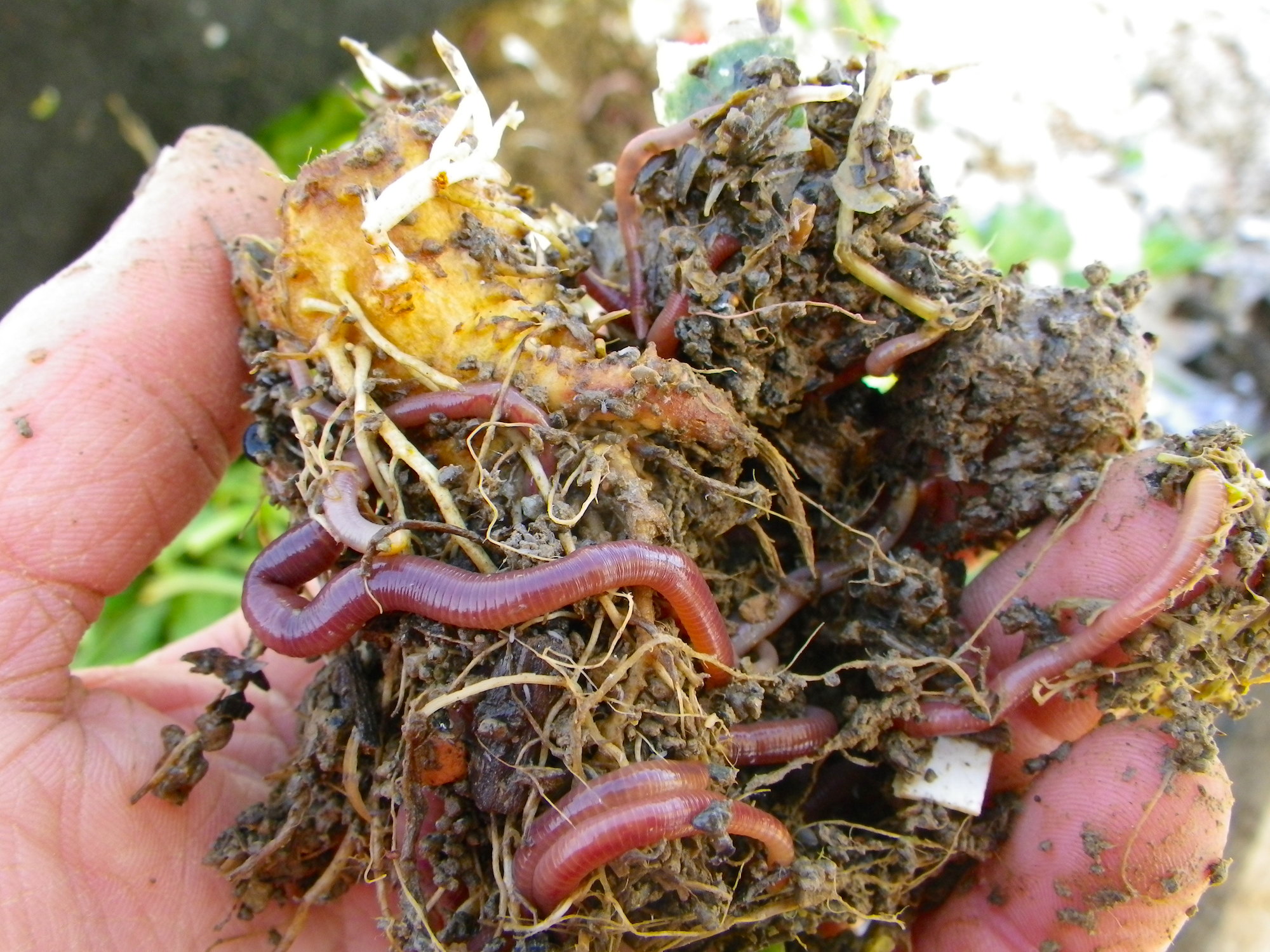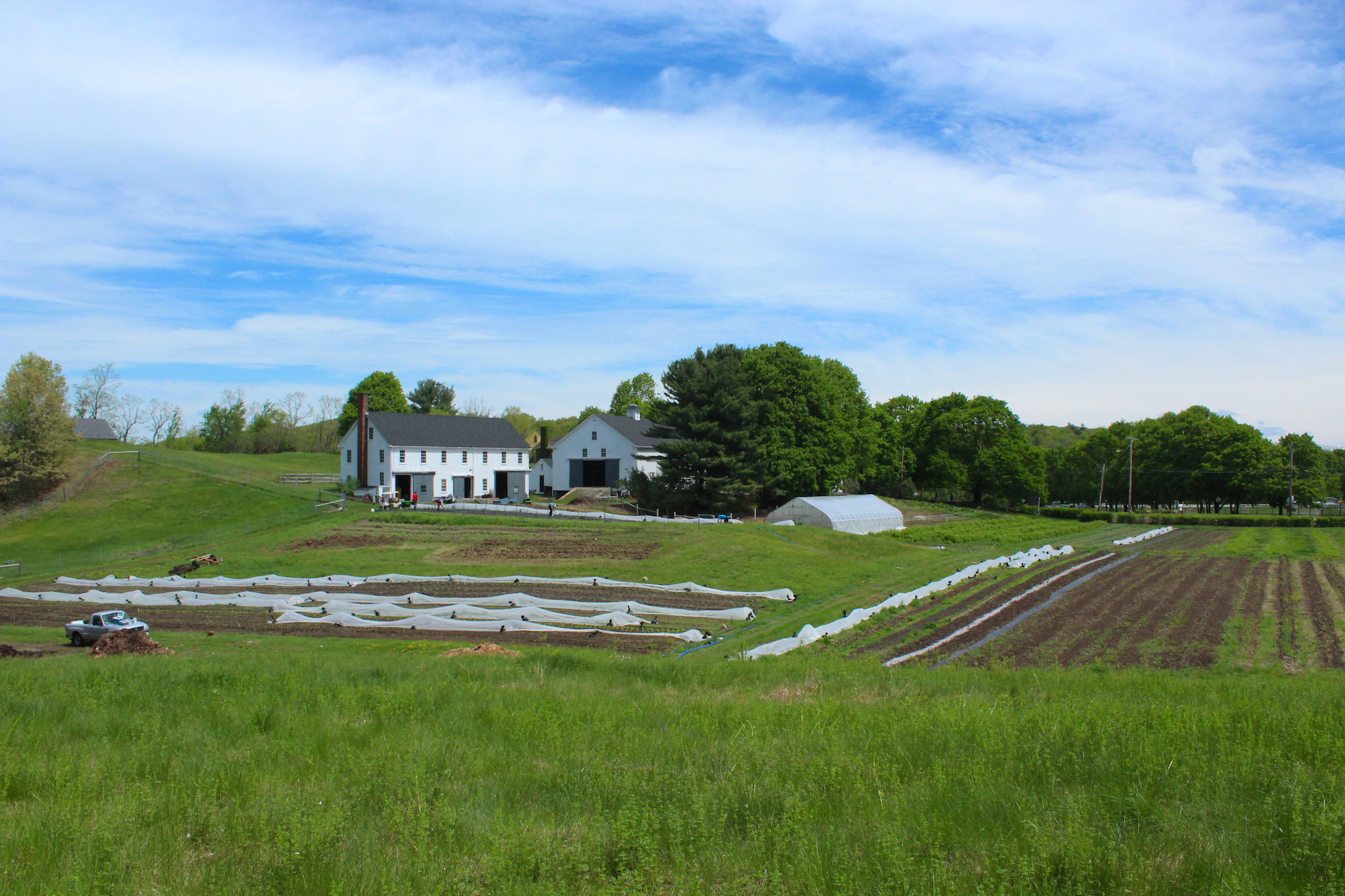May 2018
Written by Board President, Sally Quinn
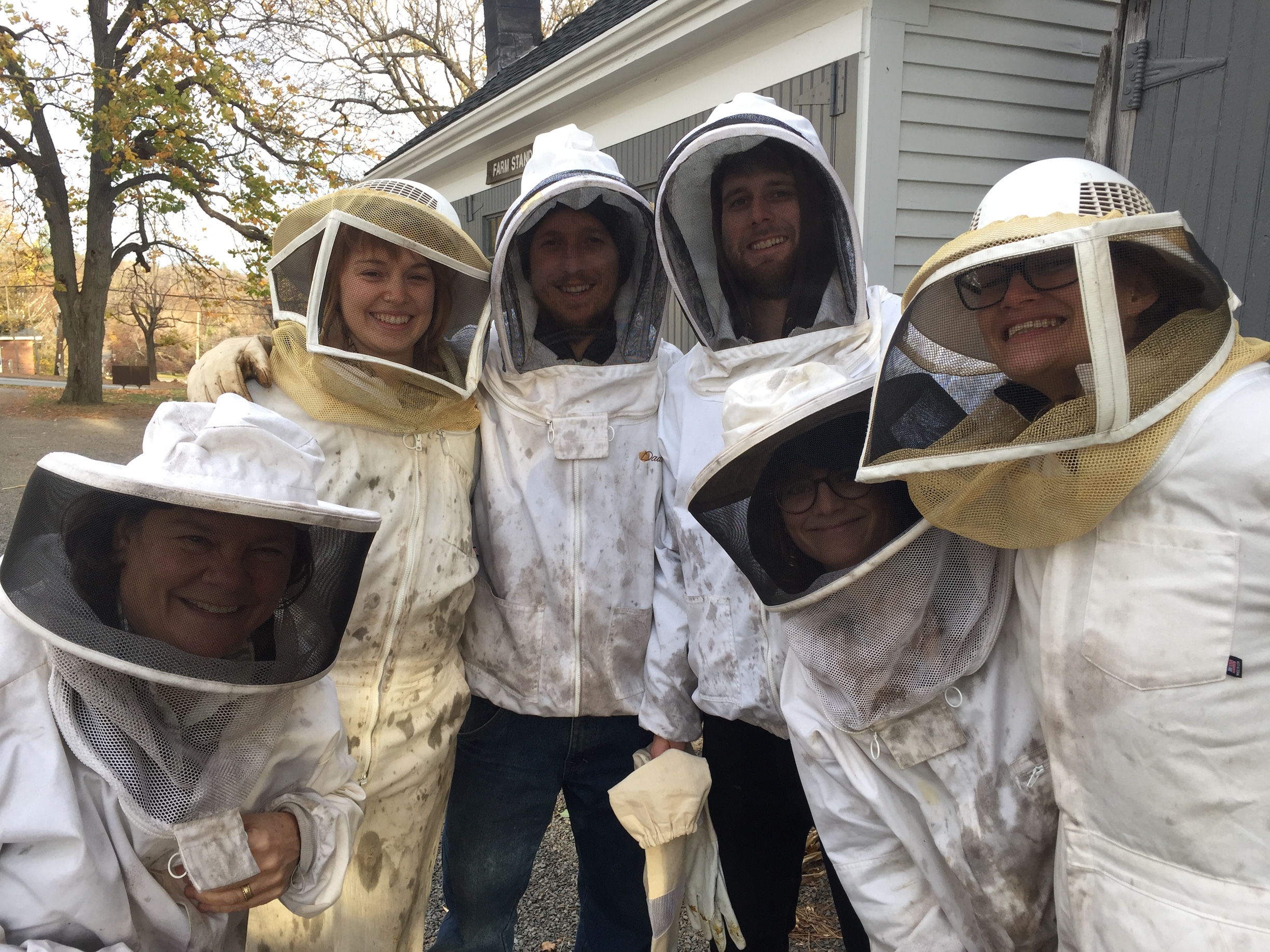
Having become the farm’s resident beekeeper (completely by mistake) has been an experience. Keeping bees at Wright-Locke Farm is exhilarating, depressing, and fascinating and it certainly never ceases to amaze. It is exhilarating when you open the hive to observe 30,000 worker bees (all female) buzzing inside, making honey, caring for the queen, building comb, and constantly cleaning and tidying the hive. The only building supplies they use are nectar and pollen from flowers (they also need a dependable water supply nearby.) It is depressing when we lose more than half of the hives over the winter, especially if those same hives are still full of honey, proving that they did not starve.
It is fascinating when you observe a queen cell which is a protuberance from the comb built by the worker bees when they sense they possibly need a new queen. You may see several in a healthy hive. Either the workers have noticed that the old queen bee is not laying many eggs or they simply have a back-up plan and the current queen is healthy and laying. Slightly different-looking queen cells may hint that the bees are getting ready to swarm as they need more room. A cagy beekeeper notices this and immediately adds boxes to the top of the hive so that the bees have more real estate to move in to and will therefore not leave for larger quarters in a swarm.
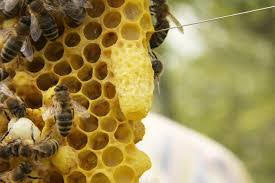
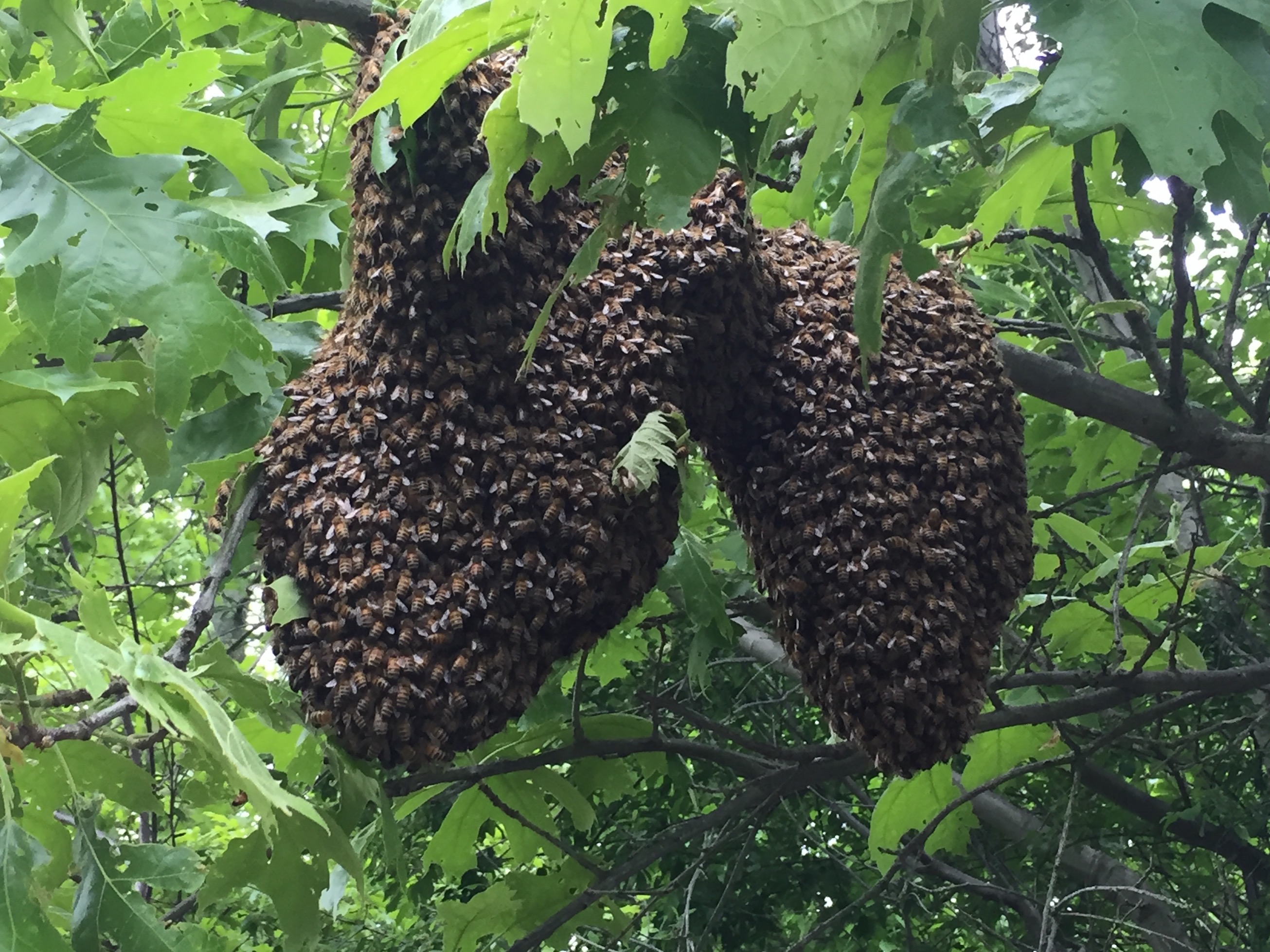
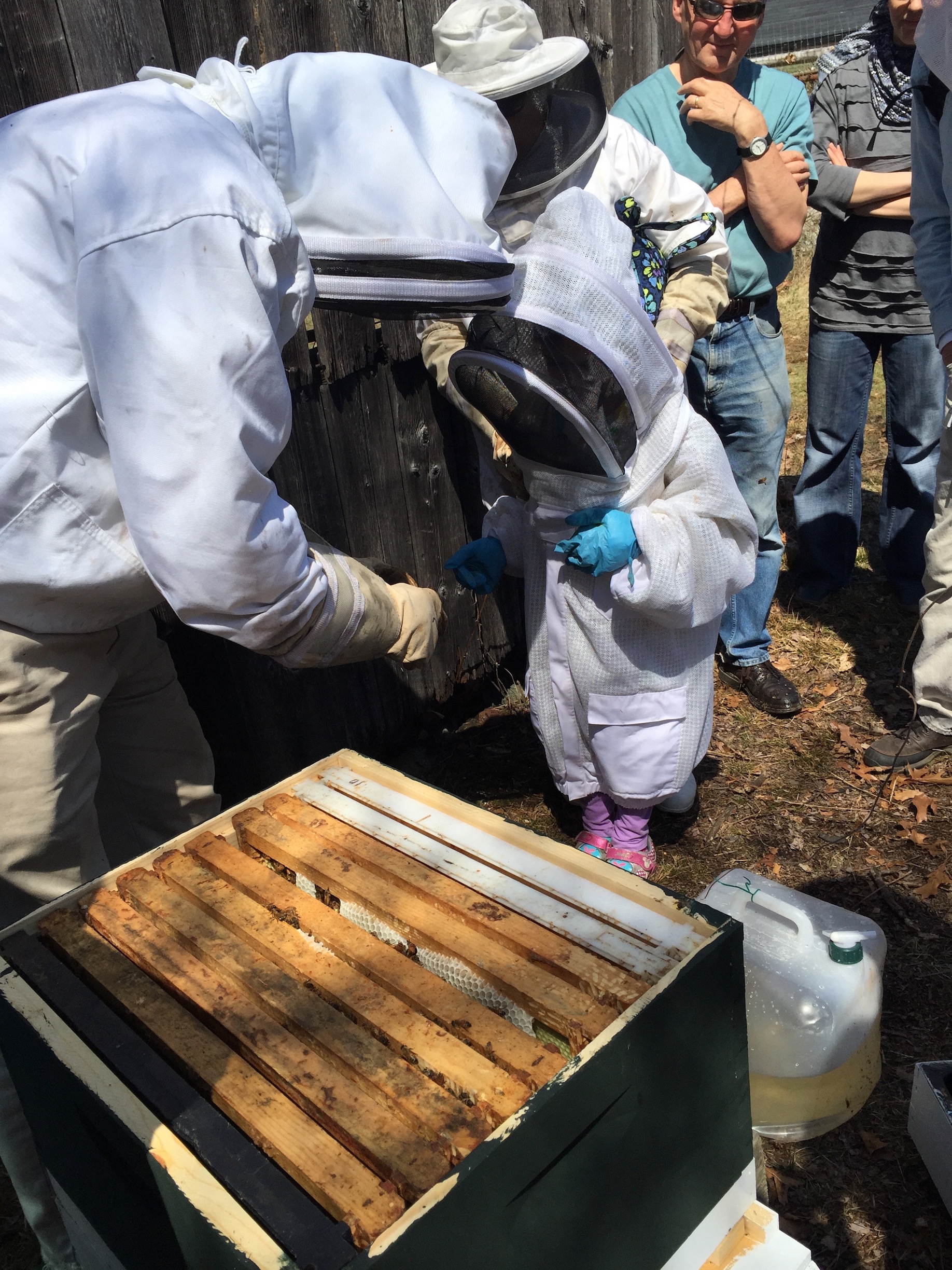
Here are some fun facts about honey bees.
- A single honeybee will only produce approximately 1/12 teaspoon of honey in her lifetime.
- There are three types of bees in the hive – Queen, Worker and Drone.
- The queen may lay 600-1500 eggs each day during her 3 or 4-year lifetime. This daily egg production may equal her own weight. She is constantly fed and groomed by attendant worker bees.
- Honeybees are responsible for pollinating approximately 80% of all fruit, vegetable and seed crops in the U.S. To make one pound of honey, the bees in the colony must visit 2 million flowers, fly over 55,000 miles and will be the lifetime work of approximately 768 bees.
- A single honey bee will visit 50-100 flowers on a single trip out of the hive.
- Bees produce honey as food stores for the hive during the long months of winter when flowers aren’t blooming and therefore nectar is unavailable.
- Out of 20,000 species of bees, only 4 make honey.
- The honeybees we all know in the United States are not a native species. They were imported from Europe by the early settlers. Who wouldn’t bring a supply of sweet honey to the new world?
- Bees maintain a temperature of 92-93 degrees Fahrenheit in their central brood nest regardless of whether the outside temperature is 110 or -40 degrees.
We have been relatively successful at catching swarms at Wright-Locke. When lucky enough to see a swarm that is low to the ground so we can catch it, the harvest is fairly straightforward. Grab a hive box and knock the swarm into it. The bees fall like marbles into the box. If you have captured the queen, the swarm will likely make a new home in your previously empty hive. If you do not have the queen, they will all fly off in search of her. Keep your eyes open this spring and let us know if you see a swarm, either in a tree or flying overhead. We can always welcome more bees to our apiary.
We keep Langstroth bee hives which are modular hives that are made up of boxes that hold vertically hung frames. These frames inside the boxes are designed to mimic a natural beehive both in distance between the frames and in the shape and size of the individual comb hexagons. Left alone, bees will keep this specific distance between combs and will make all the hexagonal cells the same size, with the exception of some cells they make larger for the drone (or male) bee to develop. Since drones provide no benefit to the hive except for fertilization of the queen, there are not many drone cells in a hive.
We nurture these hives through the spring as they expand their colony, build out honeycomb, and allow the queen to lay lots of brood, ensuring a large enough colony for the season. As the season goes on and the hives grow, we add more boxes for the bees to grow into. Our hives are color coded (mostly). The large green boxes near the bottoms are called “deeps” and they are where the brood and honey for the hive will be. Later in the spring we will add shorter white boxes (supers) to the top of the hives and that is where get the honey for harvest. Green boxes for the bees; white boxes for honey sales to the public. A successful apiary insures that the bees get the honey first. Note that in the photo above we also have a white bottom entrance for the bees.
At Wright-Locke we value our bees both for the work they perform to help us grow more crops and also because we know that the honey bees of the world are threatened. We like to be a part of the solution, however small our part may be.
Come on up to the farm and observe our hives (from a distance, please. Honeybees sting if irritated). They are down the hill from the farmstead to the left of the shed near the pond. Sit down and watch them for a while. Bees do not spend a lot of time resting!
We are forming a bee committee to help us care for the bees this summer. Email me at squinn@wlfarm.org if you are interested.
